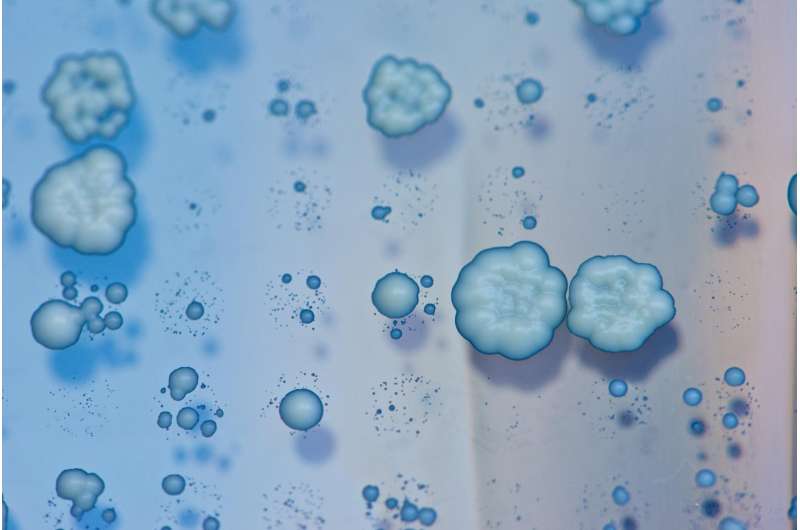Directed gene-copy variation: The key to conquering new environments

A study of yeast reveals new mechanism that allows cells to adapt to environmental changes more rapidly by accelerating genetic changes around genes that boost fitness, publishing 27 June in the open access journal PLOS Biology, by Dr. Jon Houseley and colleagues at the Babraham Institute in Cambridge, UK.
Species evolve over time because individuals that are most suited to their environment survive and have more offspring—what is known as the 'survival of the fittest'. However, it's typically assumed that those differences in fitness result from genetic changes that occur randomly; the new study uncovers a mechanism by which changes can be specifically targeted at genes that are being more heavily used.
The researchers used yeast to examine changes to the number of gene copies in each cell. Although we think of cells as containing one or two copies of each gene at most, they often carry more copies of many genes; increasing the number of copies allows cells to synthesise more protein product from those genes, which make processes more efficient. Houseley and colleagues' results show that when a cell makes intensive use of a particular gene (by transcribing it into mRNA to make protein), it has a greater chance of undergoing a change in copy number. In some cells this results in more copies, helping them to become more suited to their environment. In other words, the more heavily a gene is used, the more likely it is to change its copy number and potentially make the cell fitter.
In particular, the study focused on a gene in yeast called CUP1, which is needed for cells to survive in environments with high levels of copper. Yeast cells typically carry between two and fifteen copies of this gene, but when levels of copper rose, the researchers observed that variation in copy number increased. As a result, some cells gained additional copies of the CUP1 gene, which allowed them to outcompete cells with fewer CUP1 copies in the same environment. Further results demonstrated that cells can control this process via a protein called Rtt109, which adds chemical modifications to particular sites in the genome, promoting copy number change in those areas.
Ryan Hull, the PhD student leading the study in the Houseley lab, said: "We think of genetic change as a purely random process, but it makes sense for cells to develop a way to focus this process to help them adapt to changing environments. There are already specific examples of this, but what's interesting here is that the mechanism we've proposed potentially works for many genes across the genome."
Future work in this area will aim to determine how many genes in the genome can make use of this process to adapt their copy number to environmental changes and to examine whether similar systems may operate to drive evolution in other organisms.
More information: Hull RM, Cruz C, Jack CV, Houseley J (2017) Environmental change drives accelerated adaptation through stimulated copy number variation. PLoS Biol 15(6): e2001333. doi.org/10.1371/journal.pbio.2001333
Journal information: PLoS Biology
Provided by Public Library of Science



















